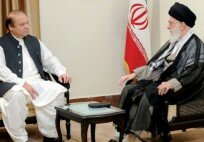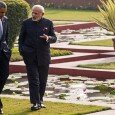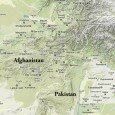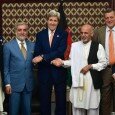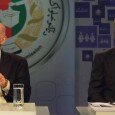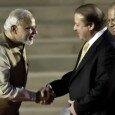By Faisal Raza Khan –
SAARC conference started under the theme “Deeper Integration for Peace and Prosperity” but nothing substantial came across on flow of investments and financial arrangements to push the economies towards stronger regional integration
South Asian Association for Regional Corporation (SAARC) is an identity of 1.7 billion people living in extreme poverty, damaged economy, threat of climate change, water scarcity, food insecurity, terrorism and war while Indo-Pak regional rivalry has engulfed SAARC in its dark clouds.
The organization, which was initially carved for larger regional integration but since its inception in 1985, SAARC remained under Indo-Pak hostilities and Delhi-Islamabad completely hijacked its charter in the backdrop of bilateral disputes and their differences never allow SAARC to take its first flight.
The same situation emerged before recent SAARC summit as after Premier Nawaz Sharif’s Delhi visit on May 26th, 2014 – India unilaterally cancelled already agreed foreign secretary talks citing Pakistani high commissioner to India meetings with Kashmiri leaders, then India started unprovoked firing at Line of Control (LoC) and Working Boundary (WB). Soon after, India started blaming Pakistan and during an election rally speech in Maharashtra, Indian Premier Narendra Modi harshly said, “Pakistan has got a befitting lesson, they will not dare to repeat it again, our jawans have shut their mouth.” Then, referring to the cross-border skirmishes at LoC and Working Boundary, Indian Defense Minister Arun Jaitley similarly warns that “Our conventional strength is far more than theirs and therefore if they persist with this, the cost to them would be un-affordable. They will also feel the pain of this kind of adventurism.” While Indian media claims that military instructed to inflict more destruction to Pakistan and was saying, “The prime minister’s office has instructed us to ensure that Pakistan suffers deep and heavy losses.”
It seems that Modi’s rhetoric is reflective of a medieval mindset, provoking Hinduthva philosophy, enmity towards Pakistan, intention to revoke article 370 and abolishing Jammu and Kashmir’s special status, reversing the Indian nuclear doctrine, triggering arms race in South Asia, proxy war in Afghanistan and destabilization in Pakistan using Afghan territory are those factors which is ruining already poised situation in South Asia.
In Afghanistan, when North Atlantic Treaty Organization’s (NATO) lead international security assistance force (ISAF) is leaving Afghanistan and US intends India to have a bigger regional role, Dr. Ashraf Ghani’s emergence in Afghanistan and his tilt towards Pakistan badly hit Indian designs, expansion and proxy war in the region. On the onset, the combination of reactionary policies in the Hindu right-wing’s manifesto with the anti-Muslim image of Modi is putting South Asia on a very dangerous path. Most analyst believe that due to Hinduthva driven agenda Narendera Modi becomes a constant threat for peace and security of South Asia while Indian hegemonic plans undermining regional approach of sharing regional peace and development.
China’s emerging role in regional and international arena and its expanding economic and political engagement with the SAARC countries also worrying signs for India and that was more visible after recent Kathmandu summit where Chinese Vice Foreign Minister Liu Zhenmin promised Beijing’s US$30bn investment for infrastructure development in South Asia and more than 10,000 scholarships for young South Asians while Pakistan has pleaded the case of China’s permanent status in SAARC to which India is deadly opposing at this stage.
In the same regional environment, 18th SAARC summit was held and suffered regional tug of war and Pakistan-India dominance right at the beginning till end. One can easily get conclusion that rather concrete outcomes of SAARC summit, viable agreements of collaboration, steps towards economic uplift and decline in poverty, stern measures against non-state actors and terrorists, non-interference in other state’s affairs, cooperation in terms of security and mutual assistance in other areas but host Nepal was busy in bringing Pakistani and Indian leadership together at negotiating table with fears of failing Katmandu summit, which become reality in the end.
Indo-Pak leaders shook hands in front of media at the closing ceremony but they can make it possible right at the start of this summit to at least give a look to international community that both countries are serious in tackling grave regional issues.
Both India and Nepal accused Pakistan for a failed summit and portrayed that Pakistan declined to sign two rail and road multi-lateral pacts with slight agreement on energy pact while Pakistan’s Ministry of Foreign Affairs cleared it by saying, “Both agreements were not finalized, Pakistan among some other states have not completed their internal procedures with regard to the two agreements and Pakistan has already indicated to the host Secretariat that the procedures had not been completed.”
SAARC conference was started under the theme “Deeper Integration for Peace and Prosperity” but nothing substantial came across on flow of investments and financial arrangements to push the economies towards stronger regional integration, there have been no major breakthroughs in terms of regional social and security cooperation, no significant move on fighting terrorism which was the major concern particularly by India, Afghanistan, and Nepal, so even the main them of summit was not properly addressed. The question lies here that why after 30 years, SAARC activities have been lethargic and infuriatingly sluggish, organization failed to achieve its basic goals and never got a success in holding 11 annual summits for purely political reasons, both at the bilateral and internal levels. Since 2006, South Asian Free Trade Agreement (SAFTA); trade among South Asian nations makes up only five percent of their total, no viable economic mechanism exists so far, having few transport and power links, both Pakistan and India are dominating SAARC entity and literally made it a paralyzed union.
SAARC dream of establishing regional economic community in next 15 years looks ‘optical illusion’ as there is no consensus yet on issues of removing poverty, effectively fighting terrorism and robust regional connectivity while Kathmandu Declaration is complete set of some lofty, translucent and exaggerated goals and a replica of last summit exercise rather a viable and concrete objectives.
The prime minister of host country Nepal said the achievements of the SAARC had fallen short of expectations, and urged fellow leaders to “summon the political will” to translate their words into action. “Despite several transformative potentials in the region, our achievement stands short of expectations,” said Sushil Koirala in a speech at the closing ceremony while added that “We (member states) alone are responsible for shortcomings in the SAARC process.”
South Asia urgently needs cross-border investments and free-movement of people, tackling cross-border terrorism, solution of outstanding territorial disputes, communication sharing and technology, overcoming inter-state tensions and mistrust, economic integration, resolution of interstate disputes, measures to eradicate poverty, climate change, water scarcity, food insecurity, rising sea levels threatening stability, economies and societies in South Asia, if these would be urgently addressed then 19th SAARC summit in Islamabad, could be a success otherwise in present scenario there is nothing substantive to offer in 2016?
The writer is an Islamabad based foreign policy, diplomacy and climate science correspondent





























































